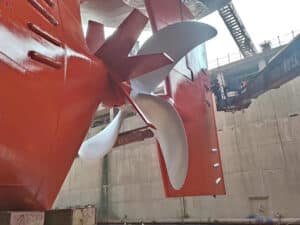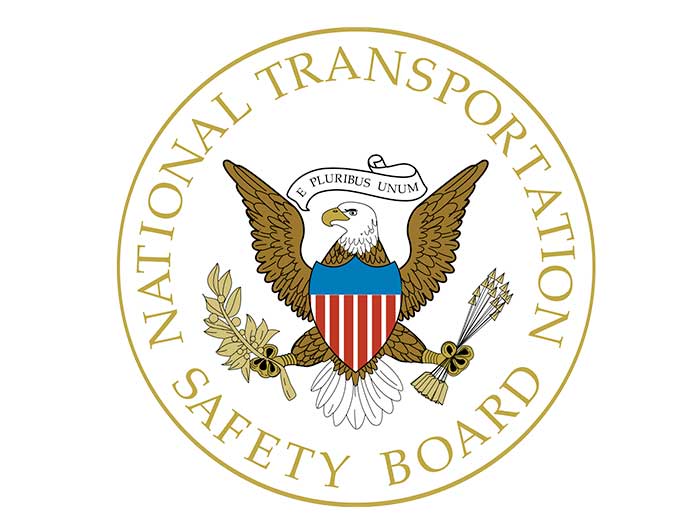
Inadequate tow planning seen as leading to sinking of fishing vessel Carol Jean
Written by Nick Blenkey
Image: NTSB
The National Transportation Safety Board has issued the report of its investigation of the sinking of the commercial fishing vessel Carol Jean.
On March 21, this year, while anchored with no one on board, the Carol Jean flooded and sank in the Atlantic Ocean near Tybee Island, Georgia. After the vessel’s emergency position indicating radio beacon, or EPIRB, activated, the U.S. Coast Guard responded and found a debris field where the beacon’s signal originated. There was no pollution reported. The loss of the Carol Jean was estimated at $250,000.
The 71.9-foot-long, wooden-hulled commercial fishing vessel was built in 1981. The vessel’s captain had owned and operated it for over five years and used it “every once in a while” to catch shrimp. It was normally docked in Valona, Ga.
On March 14, 2023, the captain sailed the Carol Jean from Valona to Port Royal, S.C., to purchase the 66.4-foot-long commercial fishing vessel Having Faith, which had not been operated for many years and did not have an engine installed. After purchasing the Having Faith on March 15, the captain intended to tow the vessel back to Valona to remove any valuable or useful parts or materials.
On the morning of March 16, the captain of the Carol Jean began preparations to tow the Having Faith from Port Royal to Valona, with the assistance of a friend. The captain found a 100- to 150-foot-long rope in a forward compartment on the Having Faith that he used as the tow line. The rope had been stored on the Having Faith for an unknown period of time. The captain stated that he believed it was an anchor line, and since it was “big,” he and his friend thought it would suffice (he did not know what material the rope was made of or the rope’s diameter). The captain and his friend connected the tow line to the aft boom on the Carol Jean and then passed the other end through the Having Faith’s anchor chute (chain pipe), into an open hatch, and tied it around two fuel tanks located within the forward compartment.
The captain also did not use chafing gear to protect the tow line during the voyage, and the line eventually frayed and parted.
As the captain and crewmember attempted to reestablish the tow on March 16, the tow line became entangled in the Carol Jean’s propeller, preventing the vessel from moving. The following day the weather deteriorated, and the U.S. Coast Guard evacuated the Carol Jean crew. The vessel remained anchored off the coast of Georgia with no one remaining on board to monitor its status. The captain returned to the vessel on March 19 with a diver and untangled the tow line from the vessel’s propeller, but the engine clutch had been damaged and was removed to be repaired. Following the captain’s departure from the vessel on March 19, it remained unattended offshore until March 21, when its EPIRB activated. The vessel likely sank at some point between the captain’s departure from the vessel on March 19 and the activation of the vessel’s EPIRB on March 21.
The NTSB determined the probable cause of the sinking was likely flooding from an unknown source while the vessel was anchored offshore and unattended. The captain’s inadequate planning for a tow, leading to the Carol Jean being anchored after the tow line failed and fouled its propeller, contributed to the loss of the vessel.




